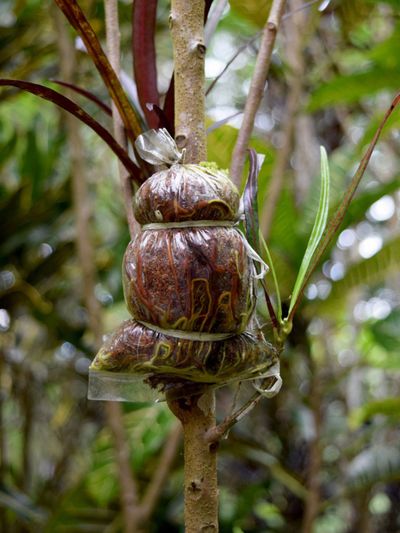Plant propagation may be accomplished in numerous ways. Seeds are the simplest method, but often maturity will take months or even years. Additionally, plants started from seed are not always identical to the parent plant. In order to ensure an identical copy, you need the genetic material. In other words, you literally use the plant itself. Layering propagation will produce genetically parallel new plants which will carry all the characteristics of the parent and one of the most popular forms of layering is air layering.
What is Air Layering?
Of all the ways to create another plant, air layering plants is a simple, easy method. What is air layering? Air layering propagation is a process that often occurs naturally. In the wild, it happens when a low branch or stem touches the ground and takes root. Because it is an asexual process, the genetic material is directly transferred to the newly rooted stem, which may be cut away from the parent to start a new plant. To learn how to air layer, you need to consider how to get the plant material to root. Each plant is different and responds differently to the methods.
Best Plants for Air Layering
Air layering plants require a moist environment for aerial roots to form. Most plants can be air layered and, even if no rooting takes place, the original plant is not damaged by the process since you do not remove the donor material until it has produced roots. Herbaceous tropical indoor plants and woody outdoor ornamentals are good candidates for air layering and may include:
Rhododendron Camellia Azalea Holly Magnolia
Nut and fruit producers like apples, pears, pecans, and citrus are often air layered too. The best plants for air layering using the simple technique would be:
Roses Forsythia Honeysuckle Boxwood Wax myrtle
How to Air Layer
Air layering is pretty simple. You need moist sphagnum moss to wrap around a wounded section of the stem. Wound an area in the middle of a branch by peeling the bark away, then wrap the moss around the cut and secure it with floral ties or plant twine. Cover the entire thing with plastic wrap to conserve the moisture. Note: You may also choose to make a simple cut with an upward slant about two-thirds through (be careful not to cut all the way). Then insert a small piece of hard plastic or a toothpick to keep the wound from closing. You can then wrap this with the moss and plastic as above. This method works well for less woody plants. The actual time for any plant to produce roots will vary but will average a couple of weeks to a month. Once you have roots, remove the plant material and pot it up as you would any plant and enjoy.

